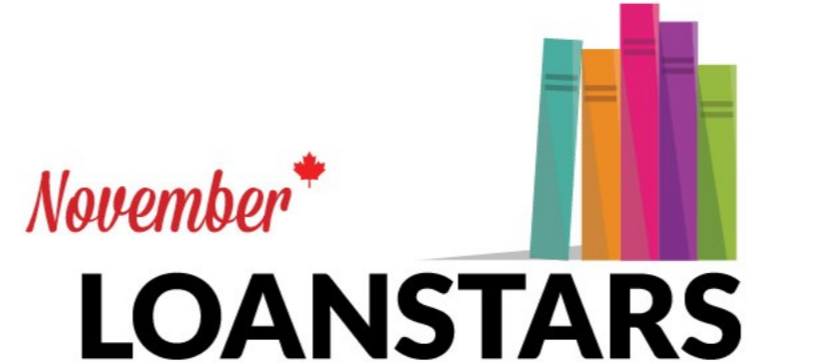In this month’s podcast episode, we dive into the data on Canadian book borrowers, their library visitorship, book borrowing by format, and more.
(Scroll down for the transcript.)
Want to make sure you never miss an episode of the podcast? You can subscribe for free on Spotify, iTunes, Pocket Casts, TuneIn, or SoundCloud.
Further reading/listening:
Weathering the Storm: Recent Challenges in Canadian Libraries
Alberta book restrictions in schools raise alarm bells for B.C. authors
Margaret Atwood releases satirical short story critiquing book bans in Canada
Alberta pauses book ban after schools remove Handmaid’s Tale, 1984 and other classics
Embarrassed Alberta Revises Its School Censorship Order. This One Is Worse
Libby’s library app adds an AI discovery feature, and not everyone is thrilled
Transcript:
Adaobi Nnaobi: Welcome to the BookNet Canada podcast. I’m Adaobi Nnaobi, the Marketing & Research Associate and the host of this month’s episode. Today we’re going to be talking about Libraries and Canadian readers using data gathered from our latest research studies, the Canadian Book Consumer Study 2024 and the Canadian Leisure & Reading Study 2024. Check out the show notes for links to some of the topics referenced this episode.
We’re going to get into the data on Canadian book borrowers, their library visitorship, book borrowing by format, and more. Before we get there though, I’d like to touch on the issues facing our libraries today in Canada. Censorship has been on the rise across North America. According to Michael Nyby’s article, “Weathering the Storm: Recent Challenges in Canadian Libraries” on the Freedom to Read website, “Between September 1, 2023, and August 31, 2024, Canadian libraries reported 104 challenges to 96 titles, five events, and one display. Following recent trends, the most common and intense challenges derived from resistance to resources concerning LGBTQIA+ issues and resources perceived to be sexually explicit.” Recently, Alberta’s education minister announced that Alberta schools would remove books that were deemed developmentally inappropriate by October 1. Many people were against this including Margaret Atwood. Not long after this announcement, there was a temporary pause on the book removals to rewrite the ministerial order and provide clarity on the rules and a revised order has been issued which doesn’t seem much better than the first. We'll see how it will impact libraries and other provinces going forward.
Now, let’s take a look at the library visitorship of Canadian book borrowers. In spite of the censorship affecting libraries today, according to the Canadian Book Consumer Study, in 2024, Canadian library book borrowers visited the library online and in-person more than ever before. Most Canadian book borrowers visited the library one to four times a month and on average, Canadian library book borrowers borrowed five books a month in 2024. Since 2020, the percentage of Canadian book borrowers who visited the library online at least once a month has increased from 50% in 2020 to 76% in 2024 while the percentage of book borrowers who visited the library in person increased from 59% in 2020 to 90% in 2024.
Looking at book formats, overall 72% of all books borrowed by Canadians in 2024 were print books, 18% were ebooks, and 10% were audiobooks. According to the Canadian Leisure & Reading Study, ebook readers were the group most likely to get their books from a free source with the public library as their source of choice at 22%. Just over half of audiobook listeners acquired their books for free in 2024 and the largest share of that group found their free audiobooks at the public library at 19%. Print readers were least likely of all format readers to get their books for free. However, the public library was the most-used free source of acquiring books at 23% for print readers.
We looked at the data from OverDrive, the world’s leading digital reading platform for libraries and schools, and we found that ebook borrowing has remained relatively stable since 2020, but audiobook checkouts continued to rise since 2015, up 18% in 2024 over 2023.
Towards the end of last year, the Toronto Public Library lowered the maximum number of holds readers can place on ebooks from 30 to 15. Following that, Markham Public Library has lowered the max number of holds to 15 as well, and London and Vaughan public libraries have limited their number of holds to 10. It will be interesting to see if and how these changes affect the Canadian book borrower data in the coming years.
Something to keep an eye on as well is the advancement of technology. Artificial Intelligence has been a hot topic in various areas of our lives for a while now and our libraries are no exception. Recently, Libby’s library app added an AI discovery feature called “Inspire Me” that allows users to get book recommendations by using prompts or from their previously saved titles in Libby. Some Libby users and librarians pushed back at the addition saying they’d prefer to get book recommendations without the use of AI technology. In our data we see that word-of-mouth continues to be the main driver of book discovery. In our Canadian Leisure and Reading survey, respondents were able to choose up to three main ways they generally discovered their books. The public library was number two at 26%. This included discovering books through library staff, browsing the library, library displays, catalogues, reader lists, newsletters, and more. It would be interesting to see if there will be a rise in AI recommendations for books and what Canadians' preferred discoverability tools would be in relation to that.
Lastly, let’s look at the reasons why Canadians go to the library. The most popular reasons for Canadian library book borrowers to visit the library in 2024 were: To pick up holds at 39%, to browse displays and shelves for books to borrow at 28%, to discover a new book, author, and/or illustrator at 20%, to put books/materials on hold at 16%, and to read magazines/newspapers at 13%.
In 2024, 32% of Canadian book buyers also borrowed books from the public library. When deciding whether to buy or borrow a book, 44% of Canadian book borrowers checked to see if it was available at their local library in 2024. Similar to past years, Canadian book borrowers borrowed, rather than bought books for these top reasons in 2024: To save money at 52%, because they didn’t want to spend money on it at 45%, because they wanted to read it, but not own it at 34%, to support their local library at 31%, and because it was a habit to borrow instead of buy at 24%.
Libraries are great and help Canadian communities in many different ways. To learn more about Canadian book borrowers take a look at the Canadian Book Consumer Study 2024 and the Canadian Leisure & Reading Study 2024. They are both free and contain very interesting information on Canadians and and their reading behaviours.
Before I go, I’d like to acknowledge that BookNet Canada's operations are remote and our colleagues contribute their work from the traditional territories of the Mississaugas of the Credit, the Anishinaabe, the Haudenosaunee, the Wyandot, the Mi’kmaq, the Ojibwa of Fort William First Nation, the Three Fires Confederacy of First Nations (which includes the Ojibwa, the Odawa, and the Potawatomie), and the Métis, the original nations and peoples of the lands we now call Beeton, Brampton, Guelph, Halifax, Thunder Bay, Toronto, Vaughan, and Windsor. We encourage you to visit the native-land.ca website to learn more about the peoples whose land you are listening from today. Moreover, BookNet Canada endorses the Calls to Action from the Truth and Reconciliation Commission of Canada and supports an ongoing shift from gatekeeping to spacemaking in the book industry.
We'd also like to acknowledge the Government of Canada for their financial support through the Canada Book Fund. See you next month for another podcast episode.














Happy holidays!